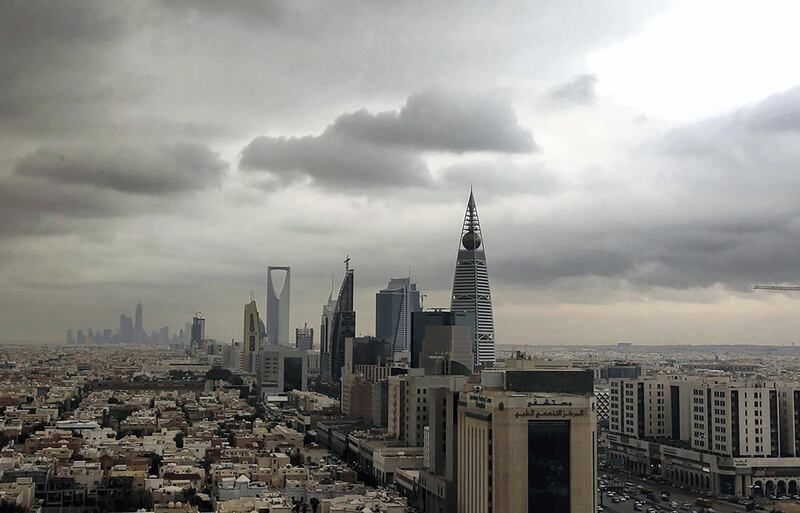The ongoing economic recovery of the Gulf region is expected to accelerate next year, with fiscal deficits narrowing, as oil income climbs and the number of Covid-19 infections fall amid wide-scale vaccination campaigns, according to the Institute of International Finance.
Growth in the regional countries is forecast to at an average 1.7 per cent this year and 4.2 per cent in 2022, the IIF said.
Hydrocarbon real gross domestic product of the region, which accounts for about a third of the world’s proven oil reserves, is projected at 5 per cent in 2022 “on the assumption that the Opec+ production cuts end by mid-2022", said Garbis Iradian, chief Mena economist and Samuel LaRussa, IIF’s senior research analyst.
“On the upside, faster vaccination rates and further progress in [implementation of economic] reforms could boost non-hydrocarbon growth in 2022.”
Economies in the GCC are bouncing back from Covid-19-induced challenges on the back of monetary and fiscal support provided to minimise the impact of the pandemic. The health crisis severely disrupted economic momentum last year and tipped the global economy into its worst recessions since the 1930s.
Wide-scale vaccinations and a drop in Covid-19 infection rates across the region have boosted investor confidence, accelerating the recovery of private sector businesses.
Regional economies also stand to gain from rising oil prices after Opec+, the group of oil-exporting countries behind recent historic production cuts, reached a deal in July on new production caps.
The IIF said 2021 budgets of the six GCC states envisage a significant fiscal consolidation this year, largely on the basis of improvement in non-hydrocarbon revenues through tax reforms and reprioritisation of spending.
It expects the aggregate current account surplus to increase to $109 billion in 2021, from $20bn in 2020.
“Our calculations show that for every $10 per barrel increase in oil prices, hydrocarbon exports would increase by $40bn in Saudi Arabia and $12bn in the UAE,” IIF economists said.
The IIF revised upward its average price for Brent for 2021 to $67 per barrel and $64 per barrel in 2022
Non-resident capital inflows into the GCC are also expected to rise to $148bn this year from $123bn in 2020. Corporate issuance in the region, including debt issued by the government-related entities, to finance existing loans and bonds that mature in 2021 will also remain sizeable.
The GCC has raised a combined $95bn so far this year from the international debt market. The region’s Eurobond issuance peaked at $111bn in 2020 and was dominated by sovereign and quasi-sovereign issuances, said the IIF.
Banking and financial institutions in region also remain resilient, supported by sound capital and liquidity positions. Non-performing loan ratios (NPLs) remained between 2 per cent and 3 per cent in Saudi Arabia, Qatar and Kuwait. NPLs stayed between 4 per cent and 8 per cent in the rest of the GCC.
Fiscal deficits will narrow in Saudi Arabia, Oman, and Bahrain, and shift to surpluses in the UAE, Qatar, and Kuwait, according to the IIF.
The IIF said regional banking regulators are expected to leave their policy rates unchanged until the end of 2022. Central banks have kept liquidity support measures in place, particularly to help small and medium-sized enterprises to weather the pandemic. This will continue to aid recovery of the private sector and the broader non-oil economy of the region, said the IIF.







